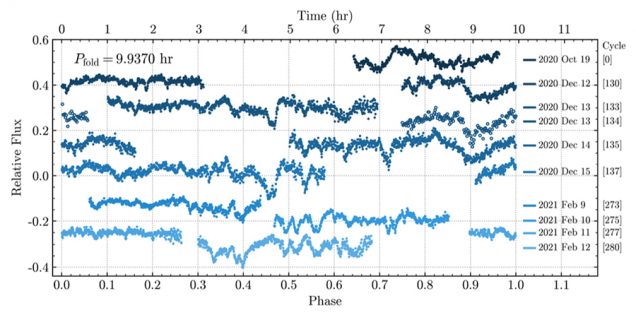Debris orbiting a white dwarf every 9.9 hours

In June 2021, collaborators from all over the world led by UT-Austin graduate student Zach Vanderbosch characterized the orbital period of transiting debris around a new white dwarf: ZTF J0328−1219. The debris shows repeating dips that are stable from night-to-night and repeat every 9.937 hr (shown in the figure above over several nights), as well as some other chunks that repeat every 11.2 hr. Spectra collected by BUWD group members were analyzed to show this is a strongly metal polluted white dwarf; new data show the debris shows circumstellar absorption features from the clouds of debris, as well. The work was accepted for publication and will appear soon in the Astrophysical Journal.